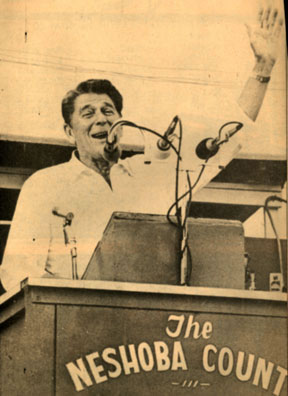“Isiah’s rhetoric has always been persuasive. He’s been dealt a bad hand. He had to make extreme moves. Every trade he’s made, the Knicks have come out ahead on talent. No one, he implies, could’ve done any more. But to get a handle on what Isiah’s done as a GM, I’ve evaluated every major move he’s made during his tenure, from trades to free-agent signings to draft picks to coaching hires. The record seems to be seriously at odds with Isiah’s claims.” In a two-part series, ESPN’s Chad Ford surveys the colossal wreckage made of the New York Knickerbockers, and suggests the way to start digging out.
Category: North America
It’s Godzilla, We’re Japan.
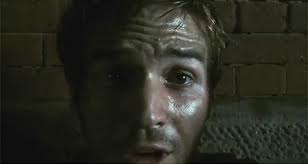
While poorly executed, surprisingly unengaging, and mostly banal, Matt Reeves’ Cloverfield, the much-hyped version of Godzilla-meets-The Blair Witch Project produced by Lost/Alias guru J.J. Abrams, does pose at its heart one truly frightening scenario: What would you do if the moment the next 9/11-level catastrophic event happens here in New York City, you just happen to be stuck at a party downtown with a bunch of godawful douchebags? Seriously, though, I’m not sure how you screw up a ground-eye-view of “Huge Monster Destroying New York” so badly, but Cloverfield is as big a January dog as they come. Not above milking blatant 9/11 imagery for gravitas (which doesn’t offend me per se, although I do wish it was in the service of a better story), Cloverfield basically tries to be little more than a monster movie thrill ride for the Youtube generation. (The film is bookended by a trip to Coney Island, and, yeah, I’d say that’s about right.) But given that the none of the main characters are all that likable, and given that the film falters on the promise of showing NYC in full disaster mode, I can’t say it’s a ride worth paying for, Sadly, one or two brief moments notwithstanding, last year’s eerie teaser is about as good as it gets.
The setup’s all in that teaser, of course, but that doesn’t stop Cloverfield, an 85-minute movie, from starting off wicked slow. After a few moments with two young lovers in a Deluxe Apartment in the Sky (Time Warner Center, to be exact), the film begins with a surprise going-away party downtown for Rob (Michael Stahl-David), a young financial type heading for Japan. (Not to obsess over real estate, but this apartment too is as impressive as the monster.) We then spend about 20 minutes wandering around said party, meeting all the young beautiful people who may or may not become Cthulhu food. (Rob, it seems, has many friends, but none of them are plain-looking.) So, let’s see, there’s Rob’s brother Jason (Mike Vogel), his best friend (and our cameraman) Hud (T.J. Miller), Jason’s girlfriend Lily (Jessica Lucas), Hud’s current crush Marlena (Lizzy Caplan)…but conspicuously absent amid them all (at first) is the fetching young lass we saw in the opening moments with Rob, Beth (Odette Yustman). She shows up late, with — ZOMG SC4ND4L! — another man in tow (I think his name was Travis, but it doesn’t matter — he’s a plot point that’s forgotten anyway), and, soon thereafter, leaves in a huff. (By now you may be thinking, uh, where’s the monster in all of this 90210 dreck? Yes, my thoughts exactly.) Anyway, so after enough time has elapsed that Beth could’ve gotten back home, there’s a shaking and a rumbling and…finally…well, you know what happens next.
Now, I could’ve forgiven Cloverfield its interminably long set-up if we then got a New York City disaster movie for the ages. But, after letting some obvious 9/11-ish images and moments — the collapsing buildings, clouds of billowing smoke, panicked cell phone calls — do the heavy lifting, the film mostly just stalls out. As far as the story goes, Rob decides he must go save Beth from the TWC, and, for reasons that don’t make much sense, everyone else just decides to tag along. Ok, that’s fine — you gotta get the protagonists moving around New York for one reason or another. Except, once the monster attacks, the city is almost completely empty, aside from U.S. infantrymen (who, as my friend pointed out, somehow got there before the Air Force.) I mean, it’s Manhattan. You’d think there’d be people wandering around everywhere in various states of terror and confusion, but, nope, all two million people either hunkered down or got out right away. In fact, other than the Statue of Liberty and the 9/11 nods, there’s not much point for the film to have taken place in New York at all. I mean, sure, there’s a sequence in the subway tunnels in which our heroes magically leap from Spring St. to 59th St. (and one which will seem rather derivative if you saw 28 Weeks Later or The Descent.) But, otherwise, this could have taken place pretty much anywhere.
If this review all sounds a bit nit-picky, well, perhaps. But, when the film never really engages at an emotional or visceral level, you gotta do something to pass the time. (The midnight crowd at my local Magic Johnson sat there more dutiful than dumbstruck.) Except for the occasional rare moment, as when the gang get caught in a full-out alley melee between the creature and the US Army, or witness a horse pulling an empty cart around Central Park, Cloverfield never establishes a groove. And everytime you think it might start to get interesting, it falls back into Archie and Veronica grandstanding. Throw in a few wildly implausible escapes and people rallying from seriously painful injuries, and there’s not much here to recommend. To be honest, I’d wait for the video. And, if no one ever finds said video under all the debris in Central Park, well, trust me, you didn’t miss much.
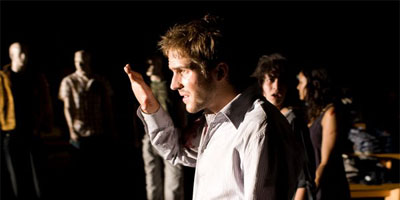
The Palmetto Blooms at Last?
“I won’t be voting for Barack Obama for president…However, as the presidential campaign trail now makes its turn toward this state, and as South Carolinians make their final decisions on whom to vote for, it’s worth pausing to take notice of something important that the Obama candidacy means for our corner of America.” South Carolina’s GOP Governor Mark Sanford isn’t endorsing Barack Obama (he isn’t endorsing anyone), but he sure does seem to like him, and what his candidacy means for the Palmetto State. “Sen. Obama is not running for president on the basis of his race, and no one should cast their ballot for or against him on that basis. Nonetheless, what is happening in the initial success of his candidacy should not escape us. Within many of our own lifetimes, a man who looked like Barack Obama had a difficult time even using the public restrooms in our state. What is happening may well say a lot about America, and I do think as an early primary state we should earnestly shoulder our responsibility in determining how this part of history is ultimately written.”
Legend of the Fall.
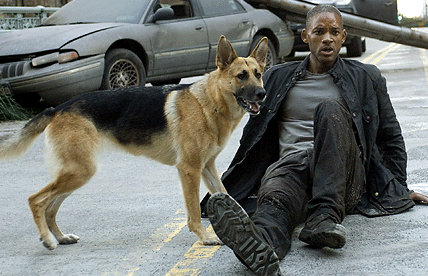
In Francis Lawrence’s I am Legend, Will Smith wanders the streets of New York City, his only companion his trusty, loyal, and free-spirited canine sidekick. To stave off the despair and dementia that lurks behind interminable loneliness, he dotes on his dog and immerses himself in routine: He watches as many movies as possible, indulges in his music collection, broadcasts his continued existence into the ether, and throws himself into his work, a solitary investigation marked by repetition and feelings of futility, one whose fruits he knows will more than likely go unused and unread. To all of this, I say: Who the hell wants to sit through a movie about the last year and change of grad school? And couldn’t they find a sheltie to play l’il Berk? (As for yours truly, I’d have gone Philip Seymour Hoffman or Paul Bettany — maybe Michael Cera for the flashbacks — but, hey, Will Smith works too.)
Seriously, though, when I first heard word they were doing another take on Richard Matheson’s eerie 1954 novella, and that word was penned by hackmeister Akiva Goldsman and read “We’re blowing up the Brooklyn Bridge!“, I figured this would be a big budget stinker, along the lines of Alex Proyas’ version of I, Robot. And yet, while a action blockbuster has been grafted onto the basic story (and it’s moved from suburban California to the heart of Metropolis), Francis Lawrence’s I am Legend is surprisingly true to the grim feel of the novella. In short, Legend is a much quieter and more melancholy film than I ever expected. And, while it definitely has some problems, it’s probably my favorite big budget blockbuster of the year, with the possible exception of The Bourne Ultimatum. True, Lawrence’s take on Constantine in 2005 turned out better than I figured as well. Still, I’m actually quite surprised by how moody and haunting this film turned out to be. (And, give credit where it’s due. Like Paul Haggis and In the Valley of Elah, I’m forced to concede that Goldsman might not always be the kiss of death.)
I am Legend begins innocuously enough with a sports report — It looks like the Yankees and Cubs in the World Series, although LA has an outside shot at a pennant too. But, in the near future, it ain’t just the ball players injecting experimental serums anymore. As a doctor (Emma Thompson) on the news informs us, scientists have altered the measles to work as the ultimate body-cleansing virus, in effect working as a cure for cancer. (A Cure for Cancer! This follows the baseball scores?) Cut to New York City, three years later. Round the decay of that colossal wreck, nothing beside remains…except one man (Will Smith) and his dog (Abbey), chasing down a herd of deer through the empty steel corridors of a desiccated Manhattan. (Sorta like Llewellyn Moss in No Country for Old Men, except now that country is everywhere, and the deermeat is worth more than the bag of money.) Clearly, something has gone Horribly Wrong. As we come to discover, that heralded cure backfired in dismal fashion, killing 90% of the Earth’s population immediately and turning the rest, a la the rage virus in 28 Days and 28 Weeks Later, into violent, depraved monsters with a taste for blood and a susceptibility to sunlight. This Last Man on Earth is one Robert Neville, an army scientist (blessedly immune to the disease) who spends his days in a Jamesian manse on Washington Square, working on a cure to beat back the infection, and his nights just trying to stay alive. (Put simply, “scientific atrocity, he’s the survivor.”) But, even with Samantha, his German shepherd, by his side, the loneliness and omnipresent danger are taking their toll. And as he succumbs deeper into hopelessness — and the creatures show signs of learning — his coping strategies begin to shift. Forget the cure…Maybe it’s time just to chase these Crazy Baldheads out of town…
Now, as I said, I am Legend does have it share of problems. The movie becomes more of a conventional actioner as it moves along, and the last act in particular feels weaker than the rest of the film. Looking exactly like the cave-dwellers in Neil Marshall’s The Descent, the CGI creatures have an ill-favored and badly-rendered look, and the more you see of them the less scary they become. Also, in complete counterpoint to what Dr. Neville tells us about the infecteds’ “social deevolution,” they eventually seem to get behind a Lurtz/Solomon Grundy of sorts. But his presence or authority is never really explained — he’s just a tacked-on Big Bad. I had trouble believing that somebody could’ve heard of Damien Marley but not his father Bob. (And, since you’re seemingly geared to the teeth, Dr. Neville, may I make some suggestions? 1) Infrared scope. 2) Night-Vision goggles.)
All that being said, for most of I am Legend‘s run it’s a surprisingly rich and nuanced film. Will Smith is invariably an appealing presence, but he doesn’t rely on his easy charisma or “Aw, hell no!” bluster much here. His performance is tinged with melancholy, and he does some great work in some really awful moments. Also, I feared going in that the canine companion bit would come across as a gimmick, just a cute creature for Smith to bounce off expository monologues. But Sam isn’t just Wilson the Volleyball — she’s a living, breathing character of her own. (Nor is she Lassie — she doesn’t seem preternaturally smart, and occasionally does dumb dog things, which seemed all too realistic.) And then there’s New York after the Fall, which in itself is a sort of character in the film. In shot after shot (somewhat akin to, but less showy than, the opening Times Square sequence of Vanilla Sky), Lawrence captures the eeriness of this great city laid low. Other than the aforementioned Brooklyn Bridge, “Ground Zero,” as Neville now calls it, hasn’t been destroyed or ravaged. It’s just empty, an overgrown, city-sized echo chamber for his pangs of isolation. (And as the Marley song goes, “It hurts to be alone.”) But, hey, even in a desolate New York City, with vampires lurking in the dark places, there are still plenty of fun ways to pass the time, and particularly if you have a good dog by your side.
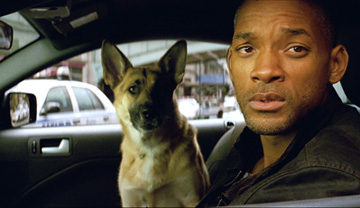
The War on Drugs is Lost.
“All told, the United States has spent an estimated $500 billion to fight drugs – with very little to show for it. Cocaine is now as cheap as it was when Escobar died and more heavily used. Methamphetamine, barely a presence in 1993, is now used by 1.5 million Americans and may be more addictive than crack. We have nearly 500,000 people behind bars for drug crimes – a twelvefold increase since 1980 – with no discernible effect on the drug traffic. Virtually the only success the government can claim is the decline in the number of Americans who smoke marijuana – and even on that count, it is not clear that federal prevention programs are responsible. In the course of fighting this war, we have allowed our military to become pawns in a civil war in Colombia and our drug agents to be used by the cartels for their own ends. Those we are paying to wage the drug war have been accused of human-rights abuses in Peru, Bolivia and Colombia. In Mexico, we are now repeating many of the same mistakes we have made in the Andes.“
To their credit, those left-wing hippie radicals at National Review said as much way back in 1996, and HBO’s The Wire has dramatized the dismal consequences of the conflict for several years now. Now, coming to the same dour conclusion in 2007, Rolling Stone‘s Ben Wallace-Wells explains how America lost the War on Drugs, and argues that continuing to perpetuate it in its current fashion — with its “law and order” emphases of crushing supply, international interdiction, and mandatory minimum sentencing — is tantamount to flushing money and lives down the toilet. “Even by conservative estimates, the War on Drugs now costs the United States $50 billion each year and has overcrowded prisons to the breaking point – all with little discernible impact on the drug trade…The real radicals of the War on Drugs are not the legalization advocates, earnestly preaching from the fringes, but the bureaucrats — the cops and judges and federal agents who are forced into a growing acceptance that rendering a popular commodity illegal, and punishing those who sell it and use it, has simply overwhelmed the capacity of government.” (Found via Jack Shafer’s endorsement at Slate.)
Coffee Talk.
In more intriguing New York area news, Obama and Bloomberg do breakfast in midtown. “[Bloomberg spokesman Stu] Loeser said among the topics discussed were global warming, homeland security, education, and the economy. He added that Bloomberg wasn’t there for any other agenda such as joining forces as Obama’s wingman against Clinton.” (And, keep in mind, the mayor dined with Chuck Hagel this past week as well.) Still, Bloomberg does appear to be an Obama fan. When he tested the waters for his own bid this past summer, it was suggested Hizzoner wouldn’t run against the Senator from Illinois.
Reagan gets Racial.
“The upshot was that by 1980, race and ideology had become so commingled that one’s stand on racial issues served as a proxy for one’s partisan preference. Previously, economic issues had been the chief dividing line between the parties. By 1980, though, according to the Edsalls, the changes that followed the civil rights movement had crystallized, and racial politics figured just as strongly.” Slate‘s resident historian David Greenberg weighs in on the recent furor at the NYT (and elsewhere) over Ronald Reagan’s 1980 campaign kickoff speech in Philadelphia, Mississippi, site of the 1964 Schwerner-Chaney-Goodman murders. (Coincidence? Sheah.) Therein, Greenberg correctly and succinctly argues that Reagan’s “I believe in states’ rights” was, in an apt turn of phrase, “a dog whistle to segregationists.“
Honestly, I’m not really sure how you could dispute this, unless you want to argue that Reagan and his political handlers were completely ignorant about the civil rights struggle, massive resistance, and the significance of Philadelphia, Miss. in those struggles. (Of course, then you’d have to explain how Reagan remained blissfully unaware of the fact his 1966 gubernatorial bid often relied on similar loaded language.) Was Reagan a racist? I dunno, that’s not the issue. Did Reagan rely on coded racial messages to appeal to white conservatives, akin to what Dubya does these days with pro-lifers and Dred Scott? Obviously.
Election Day 2007.
“Today, due to the dearth of competitive city council elections and lack of a mayor’s race, it is likely that few New Yorkers will go to the polls. A good number of residents, tied up in the hectic pace of their daily lives, will probably not even realize today is an election day.” But, Election Day it is. As such, the New York Sun‘s Seth Gitell laments the lack of interest in voting, and asks blogs to help publicize the day. (Y’know, making today a national holiday might help too.) And, while it may not be the Big Show this year, there are some important races happening around the country right now: “Kentucky and Mississippi both have gubernatorial battles. There are state legislative contests in Mississippi, New Jersey and Virginia. And a host of cities across the nation — including Baltimore, Maryland; Philadelphia, Pennsylvania; and San Francisco, California — will see mayoral elections.” (Today’s local NYC races are covered here.) Update: Dems gain Kentucky and the Virginia Senate.
Careful with that Axe, Gill.
“The Accused is a role that demands the ability to transmute technique into the expression of the passionate intensity, psychological pain and pure hatred that drive the character to her gruesome deeds. And in 2007 it also demands a strength of interpretation that can transcend the stylized Americana that makes this work feel museum-piece valuable and dated at the same time. Ms. Murphy managed just that in an impressive role debut on Friday night.“
My sister Gillian draws a rave in the NYT for her Fall River Legend on Friday, as excerpted below: “Her auburn hair drawn tightly away from her face into a gleaming skullcap, her pale face tight and impassive above her high-necked dress, she embodied (to borrow the title of a famous piece of feminist literature) the madwoman in the attic — the Victorian antiheroine who incarnates the rage and anxiety forbidden by a sexually repressive, socially coercive society. There is plenty of dancing for the Accused in ‘Fall River Legend,’ but it is testament to Ms. Murphy’s acting that the movements became a seamless part of a succession of memorable emotional moments: her little shudder as the details of the violent acts are read out at the beginning; her suppressed amusement and momentary triumph at her father and stepmother’s fear when she first picks up the ax to chop wood; her disbelieving, scarcely allowable pleasure when the young pastor (Sascha Radetsky, also strong in a role debut) offers her love and compassion. By the time Ms. Murphy, alone onstage at the end, threw back her body and opened her arms in a final, anguished embrace of death and her fate, she had made her character simultaneously tragic and real.“
I was at City Center for both the Friday and Saturday evening shows over the weekend, and while Balanchine’s “Ballo Della Regina” honestly didn’t make much of an impression on me, I found “Fall River Legend” quite spooky and memorable. Suffice to say, all sharp objects and implements will be well-hidden next time Gill comes over.
Obama and the Vital Center.
“‘I don’t think Oklahoma has seen this kind of enthusiasm for a Democrat since Bobby Kennedy,’ marveled Lisa Pryor, chairwoman of the Oklahoma Democratic Party, who is not endorsing a candidate…’He could be the first Democrat to win Oklahoma since LBJ.‘” Is it SNL, his dance moves, or a certain je-ne-said-quoi? TIME surveys the Obama boom among Red Staters and Republicans, despite the fact that “Obama’s voting record is the most liberal of any candidate, according to a National Journal analysis. Obama’s score of 84.3% in the Journal’s ratings formula, tops even that of Representative Dennis Kucinich, who was considered the most liberal Democratic presidential candidate in 2004.“

